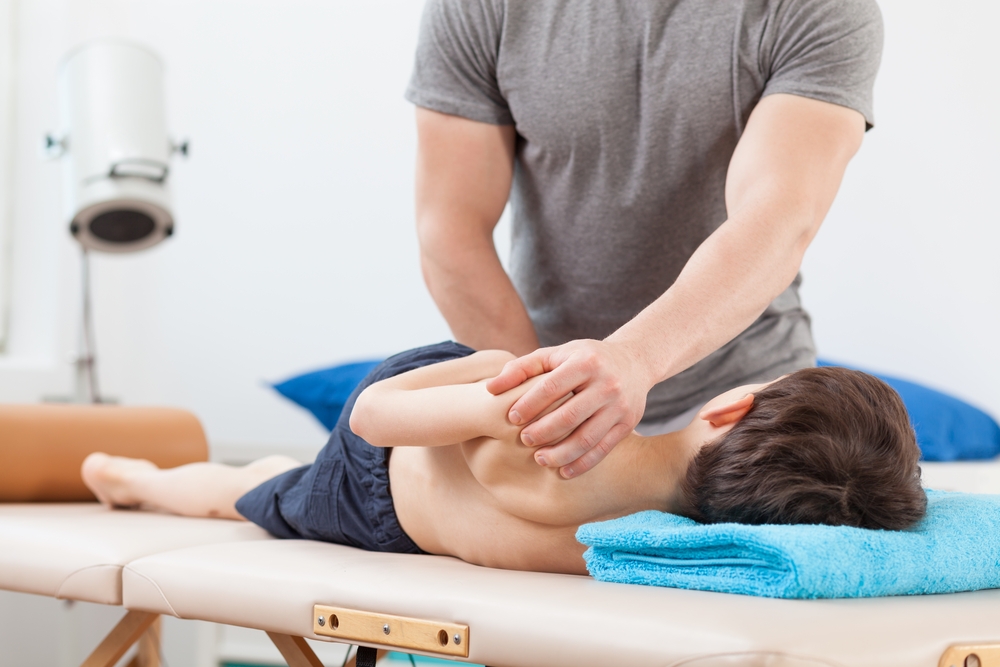Greatest Loss of Motor Skills at Ages 5 to 13 in SMA Type 2, Study Shows
Written by |

People with type 2 spinal muscular atrophy (SMA) show the greatest loss of motor abilities on the Hammersmith Functional Motor Scale Expanded (HFMSE) between the ages of 5 and 13, and the greatest gains in those age 4 or younger, according to a recent natural history study.
The motor skill most often lost in this patient population over one year was the ability to raise a knee to the chest, while those more often gained included transitioning from a sitting to a lying position and propping up on the forearms.
Data highlighted that analyzing abilities gained or lost on the HFMSE may better reflect meaningful changes in motor function in SMA patients, and could be a useful additional tool in clinical trials.
The study, “Gain and loss of abilities in type II SMA: a 12-month natural history study,” was published in the journal Neuromuscular Disorders.
Natural history studies evaluate how a disease progresses without treatment. Data from such studies in SMA are key for assessing a therapy’s benefits both in clinical trials and real-world studies after its approval.
SMA progression is evaluated through functional scales, such as the HFMSE, which were developed to evaluate motor skills in patients. HFMSE consists of 33 items measuring a patient’s ability to perform various acts, like rolling over, sitting, or rising from the floor. Item order reflects a gradual increase in task difficulty, with the last items being performed by a smaller proportion of patients.
Each item has a 3-point scoring system: 0 means unable to perform, 1 indicates performed with compensation or modification, and 2 means performed without compensation or modification. Higher HFMSE scores indicate better motor abilities.
A previous natural history study involving nearly 300 people with type 2 and 3 disease found that mean changes in HFMSE over one year were small, but the range of individual changes was much wider. Data also showed that motor function decline was more likely to occur between ages 5 and 15.
Recent studies in people with Duchenne muscular dystrophy, another neuromuscular disease, suggested that evaluating gain or loss of abilities in functional scales may be an alternative way of assessing disease progression, and one that may better capture clinically meaningful changes.
In addition, “while in a clinical setting assessing possible intermediate changes is useful to monitor small changes over time and target appropriate intervention, patients and their families are generally more concerned that an activity is performed, even if with some compensation,” the researchers wrote.
The International SMA Consortium (ISMAC) group, which includes SMA experts from the U.S., U.K., and Italy, set out to evaluate which HFMSE abilities are more frequently lost or gained in SMA type 2 patients over one year.
The researchers retrospectively analyzed data from 243 type 2 patients (134 males and 109 females) included in the ISMAC registry, comprising national datasets from the three involved countries, or other datasets in Spain and Belgium.
Eligible patients had at least two HFMSE assessments separated by one year. Using the new approach, each HFMSE item, assessing an ability, was classified as “gained” if the score increased from 0 to 1 or 2; a skill was classified “lost” if the score dropped from 1 or 2 to 0 after one year. Items whose scores remained the same or changed between 1 and 2, or vice-versa, were considered unchanged.
Participants’ age ranged from 30 months to 62.5 years (average, 9.9 years) and they were subdivided into four age groups: up to 4 years old, 5–13 years old, 14–18 years old, and 18 years old and older.
None of the patients were able to perform the more difficult HFMSE items, Nos. 23 to 33 (e.g., stand to sit, squat, jump, and stairs) at the initial assessment, results showed. Of the 614 one-year HFMSE assessments analyzed, more than half (56.5%) indicated a loss of one or more abilities, while 37.8% showed a gain of one or more activities.
Notably, the peak of abilities gained occurred before age 5 (65.7%), while the highest number of lost abilities was found among patients in the 5–13 years group (70.4%), followed by those in the 14–18 years group (25.4%).
The chance of losing or gaining two or more abilities in patients older than 18 was less than 10%.
Researchers noted that this supported previous evidence suggesting that the HFMSE may be less sensitive to detect changes in older patients. Many of the activities under evaluation are affected by the scoliosis, severe atrophy, and contractures that are more obvious at this age.
The most frequently lost ability involved bringing the left (8.1%) or the right (7.7%) knee up to the chest, and the skills more frequently gained included the ability to transition from a sitting to a lying position (6.8%) and to prop on the forearms (6.2%).
Interestingly, the abilities that were lost or gained were always those close to the last item “gained” on the scale, which likely reflects the increasing difficulty of items. And no association was seen between a loss or gain of activities, and patients’ SMN2 gene copy number, which is known to influence disease severity.
“Our results confirm the already described pattern of disease progression in SMA [2] patients at different ages,” the researchers wrote, noting that the new approach allowed them to establish “not only the frequency but also the distribution of items assessing activities that were more susceptible to be lost or gained over 12 months.”
These findings suggest that this approach could be used “in a research setting, as an additional tool for the analysis and the interpretation of HFMSE data and may prove to be useful at the time real world data are increasingly becoming available in type [2] patients,” they concluded.






